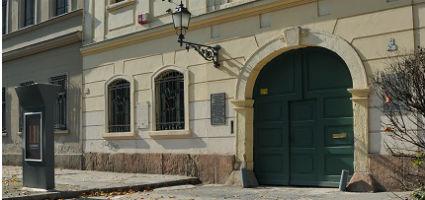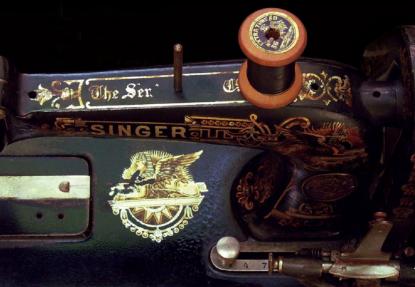2024. May 21. Tuesday
Museum of Textil And Clothing Industry (Textilmuseum) - Budapest
 |
Address: 1036, Budapest Lajos u. 138.
Phone number: (1) 250-1020
E-mail: titkarsag@obudaimuzeum.hu
Opening hours: Tue-Sun 10-18
|
The exhibition has closed for visitors.
2008.06.10. - 2008.12.31.
Museum tickets, service costs:
|
Ticket for adults
|
450 HUF
|
|
|
Ticket for students
|
400 HUF
|
|
|
Ticket for pensioners
|
400 HUF
|
|
|
Guide
|
2000 HUF
|
|
|
Group guide
(over 6 people)
|
1000 HUF
|
A large scale exhibition presents the private collection of György Tóth in the framework of the "Year of Sawing" program series. This time two permanent exhibitions are open side by side.

"Tools of Machine Sawing, the Sawing Machine" showing presents the history of machine sawing. Behind the enigmatically lit textile-tulle installation, porcelain dolls surround toy and nostalgia sawing machines borrowed from the collection of the Kiscell Museum. The oldest miniature piece is from 1864. Its strange form does not really remind us of any of the known sowing machines.
The household Singer 66 sawing machine standing on three legs, as well as the sawing machine in the Secession style are very unusual spectacles.
The smallest operating sawing machine in the world made of silver from the collection of György Tóth is a curiosity, just as the brand new acquisition of the Textile Museum, namely a Charles Raymund sawing machine driven by a Stirling motor.
If you want to know more about tools of sawing or the sawing machine, eg. who invented it, when did mass production of sawing machines began in Hungary and why not all Singers are Singers, please come and visit us.
The exhibition was organized by the curator György Tóth and the manager of the museum Éva Vajk.
Contractors: the window dresser Zsuzsa Berhidi and Béla Fejes

"Tools of Machine Sawing, the Sawing Machine" showing presents the history of machine sawing. Behind the enigmatically lit textile-tulle installation, porcelain dolls surround toy and nostalgia sawing machines borrowed from the collection of the Kiscell Museum. The oldest miniature piece is from 1864. Its strange form does not really remind us of any of the known sowing machines.
The household Singer 66 sawing machine standing on three legs, as well as the sawing machine in the Secession style are very unusual spectacles.
The smallest operating sawing machine in the world made of silver from the collection of György Tóth is a curiosity, just as the brand new acquisition of the Textile Museum, namely a Charles Raymund sawing machine driven by a Stirling motor.
If you want to know more about tools of sawing or the sawing machine, eg. who invented it, when did mass production of sawing machines began in Hungary and why not all Singers are Singers, please come and visit us.
The exhibition was organized by the curator György Tóth and the manager of the museum Éva Vajk.
Contractors: the window dresser Zsuzsa Berhidi and Béla Fejes
